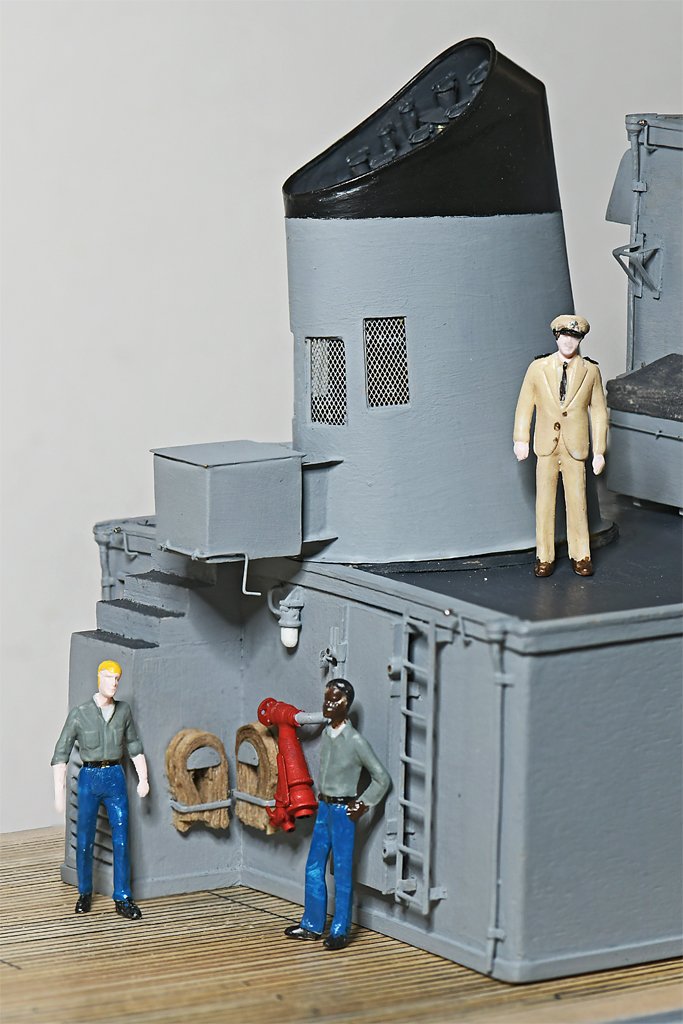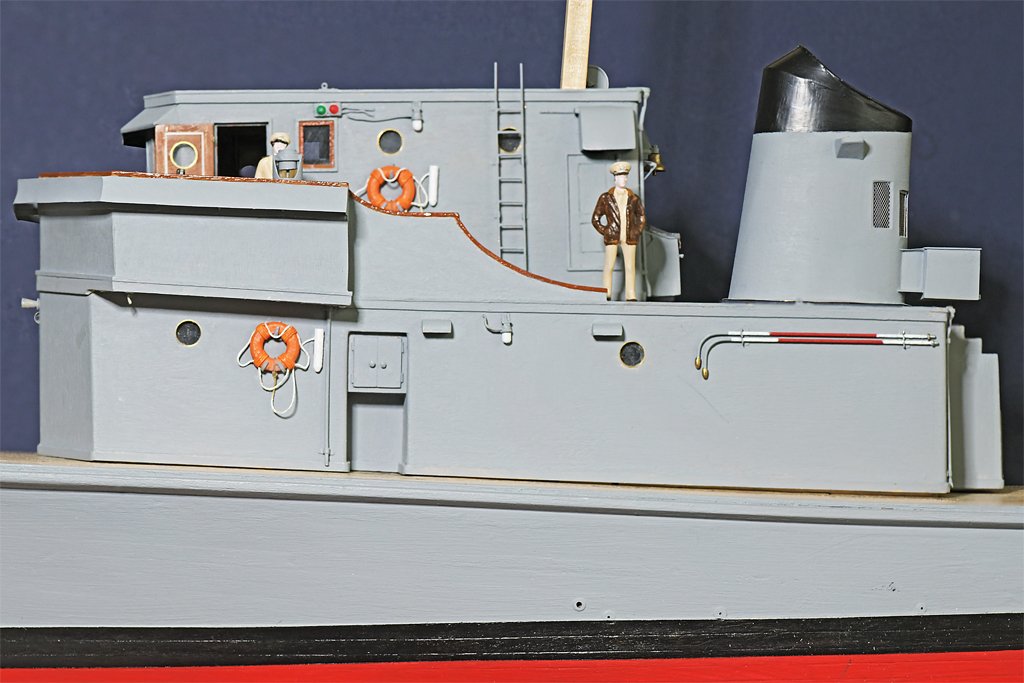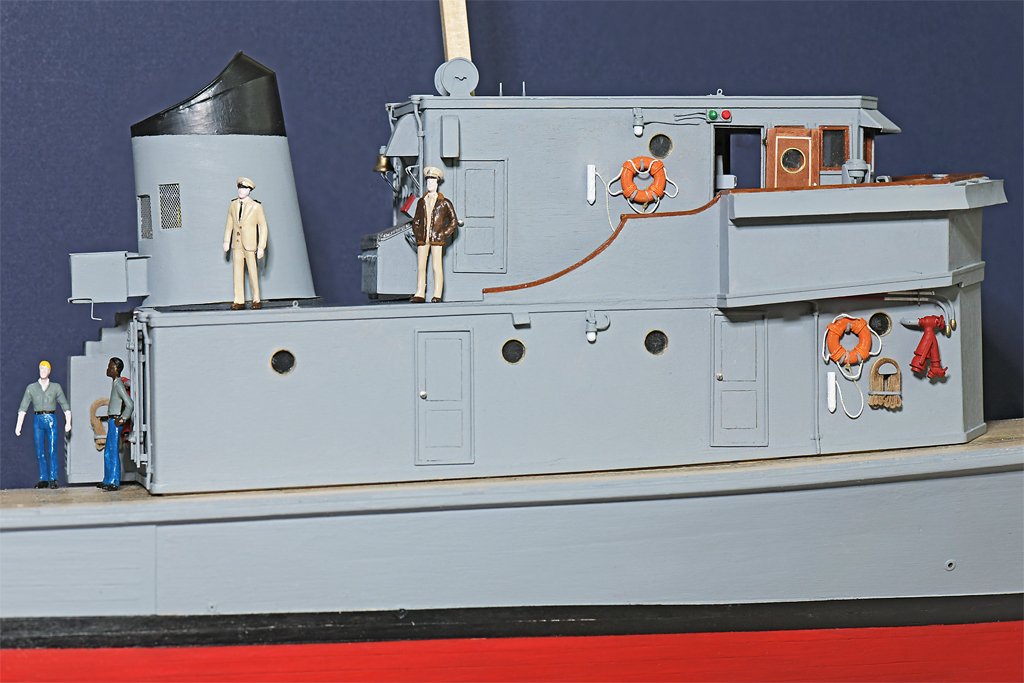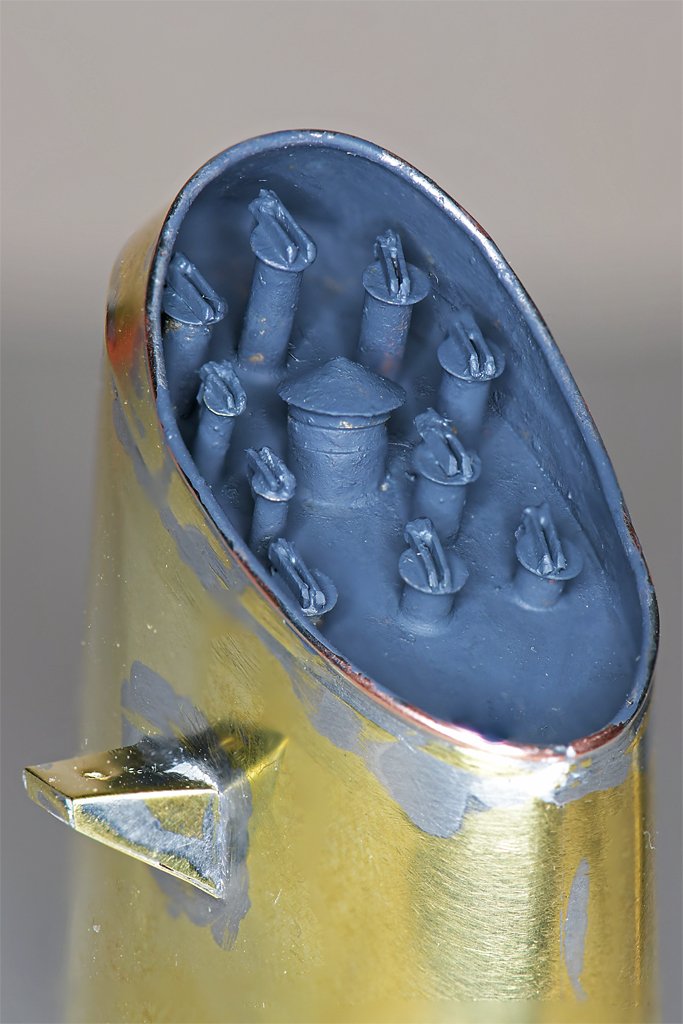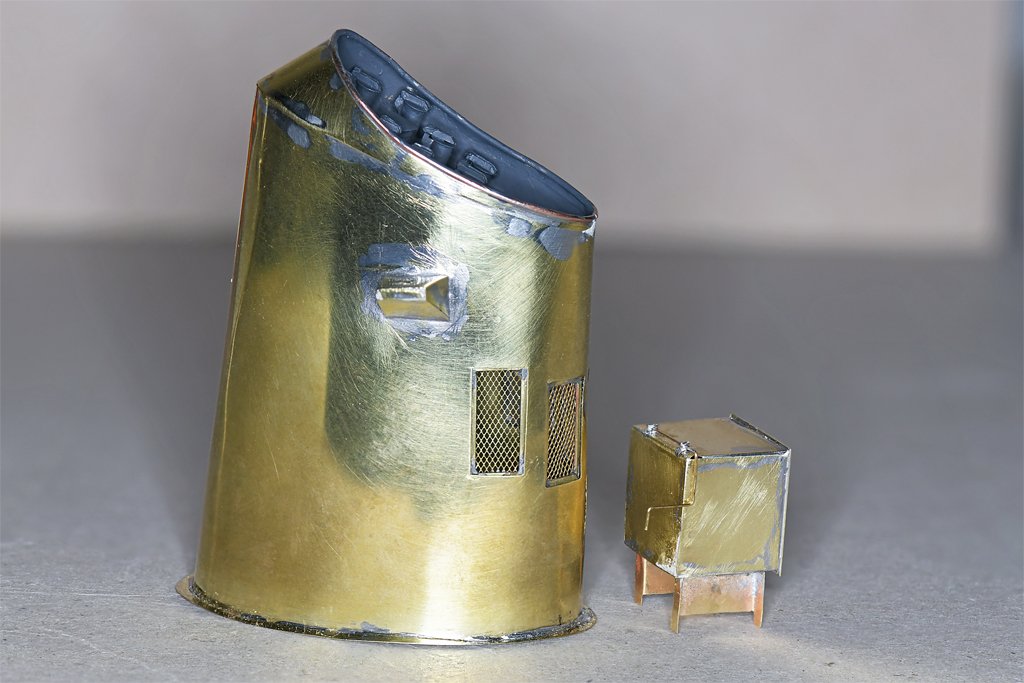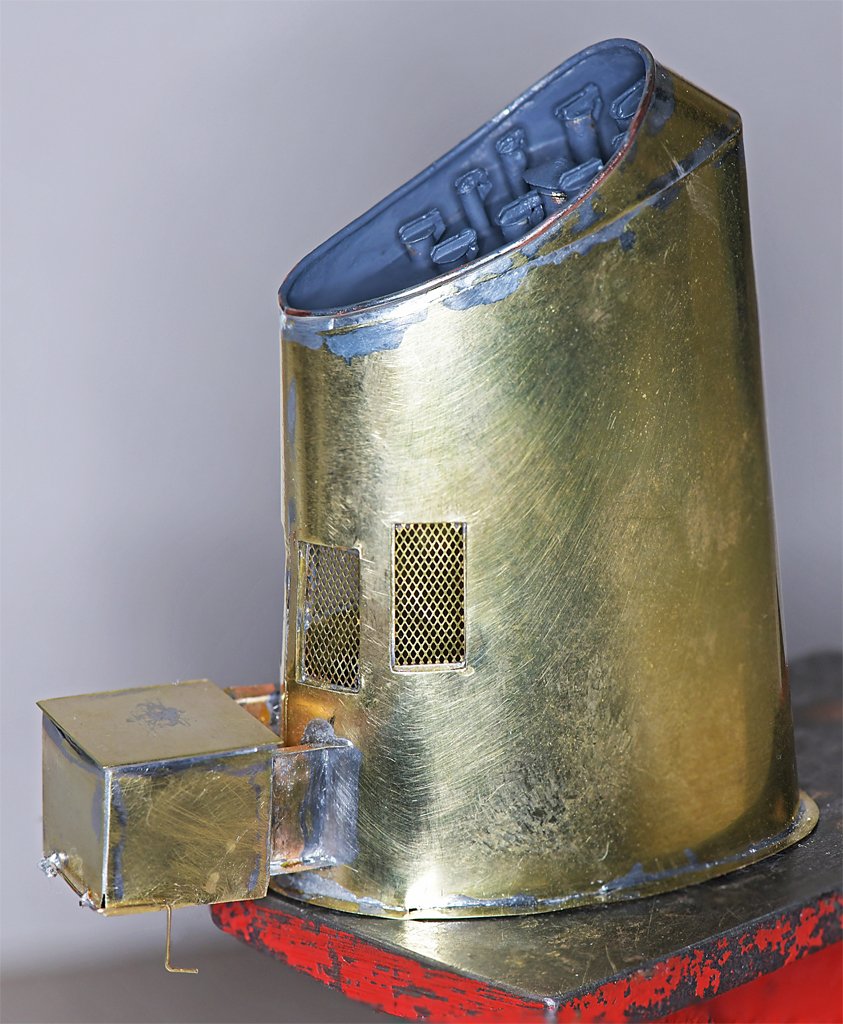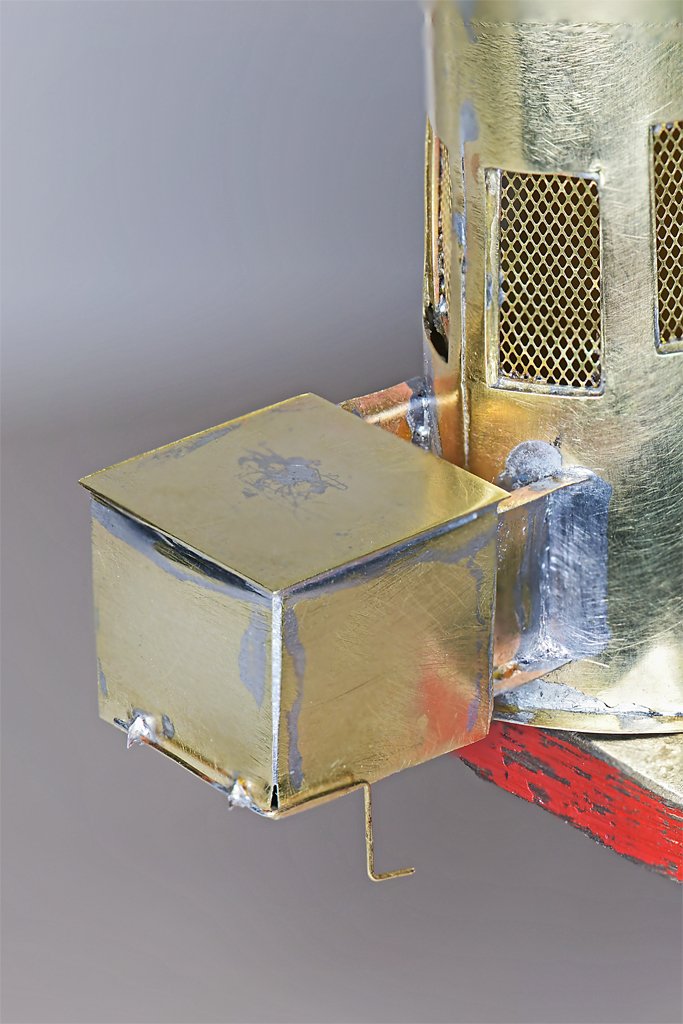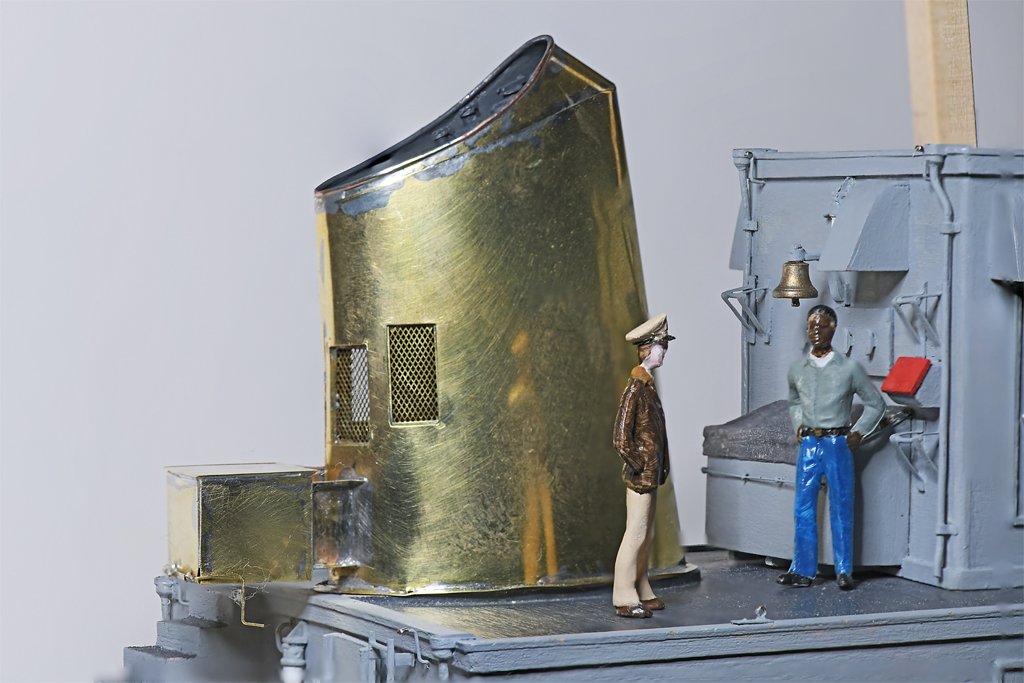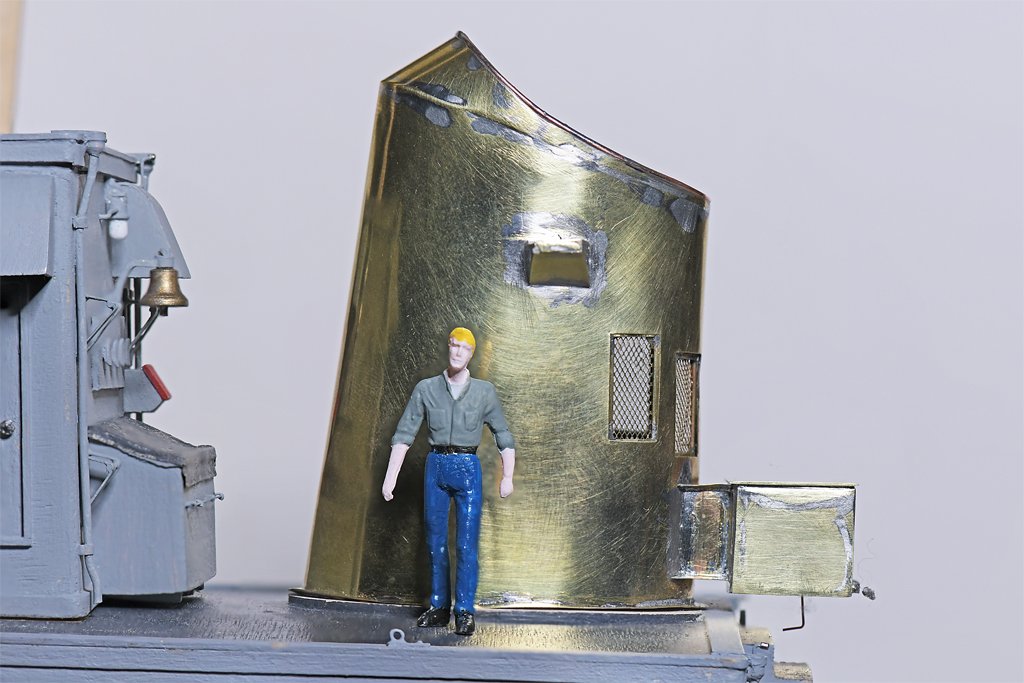-
Posts
2,438 -
Joined
-
Last visited
About Dr PR

Contact Methods
-
Website URL
https://www.okieboat.com
Profile Information
-
Location
Corvallis, OR, USA
Recent Profile Visitors
The recent visitors block is disabled and is not being shown to other users.
-
 Admiral Rick reacted to a post in a topic:
USS Cape (MSI-2) by Dr PR - 1:48 - Inshore Minesweeper
Admiral Rick reacted to a post in a topic:
USS Cape (MSI-2) by Dr PR - 1:48 - Inshore Minesweeper
-
 TBlack reacted to a post in a topic:
USS Cape (MSI-2) by Dr PR - 1:48 - Inshore Minesweeper
TBlack reacted to a post in a topic:
USS Cape (MSI-2) by Dr PR - 1:48 - Inshore Minesweeper
-
 Harvey Golden reacted to a post in a topic:
Gjøa 1872 by Harvey Golden - Roald Amundsen's Cutter built at Rosedahl, Norway
Harvey Golden reacted to a post in a topic:
Gjøa 1872 by Harvey Golden - Roald Amundsen's Cutter built at Rosedahl, Norway
-
 ccoyle reacted to a post in a topic:
USS Cape (MSI-2) by Dr PR - 1:48 - Inshore Minesweeper
ccoyle reacted to a post in a topic:
USS Cape (MSI-2) by Dr PR - 1:48 - Inshore Minesweeper
-
 ccoyle reacted to a post in a topic:
USS Cape (MSI-2) by Dr PR - 1:48 - Inshore Minesweeper
ccoyle reacted to a post in a topic:
USS Cape (MSI-2) by Dr PR - 1:48 - Inshore Minesweeper
-
 Willi reacted to a post in a topic:
USS Cape (MSI-2) by Dr PR - 1:48 - Inshore Minesweeper
Willi reacted to a post in a topic:
USS Cape (MSI-2) by Dr PR - 1:48 - Inshore Minesweeper
-
 Dr PR reacted to a post in a topic:
Billy 1938 by Keith Black - 1:120 Scale - Homemade Sternwheeler
Dr PR reacted to a post in a topic:
Billy 1938 by Keith Black - 1:120 Scale - Homemade Sternwheeler
-
 Coyote_6 reacted to a post in a topic:
USS Cape (MSI-2) by Dr PR - 1:48 - Inshore Minesweeper
Coyote_6 reacted to a post in a topic:
USS Cape (MSI-2) by Dr PR - 1:48 - Inshore Minesweeper
-
 Stephen Allen reacted to a post in a topic:
USS Cape (MSI-2) by Dr PR - 1:48 - Inshore Minesweeper
Stephen Allen reacted to a post in a topic:
USS Cape (MSI-2) by Dr PR - 1:48 - Inshore Minesweeper
-
 JacquesCousteau reacted to a post in a topic:
USS Cape (MSI-2) by Dr PR - 1:48 - Inshore Minesweeper
JacquesCousteau reacted to a post in a topic:
USS Cape (MSI-2) by Dr PR - 1:48 - Inshore Minesweeper
-
 Rick310 reacted to a post in a topic:
USS Cape (MSI-2) by Dr PR - 1:48 - Inshore Minesweeper
Rick310 reacted to a post in a topic:
USS Cape (MSI-2) by Dr PR - 1:48 - Inshore Minesweeper
-
 Dr PR reacted to a post in a topic:
USCGC STORIS 1942 by Harvey Golden - 1/192 scale
Dr PR reacted to a post in a topic:
USCGC STORIS 1942 by Harvey Golden - 1/192 scale
-
The smoke stack is finished (except for the antenna). I painted the brass with a thin coat of FolkArt all-purpose satin finish sealer. This is what I have been using to seal the wooden surfaces before painting. The instructions on the bottle say it can be used on a "non-porous surface to add slight texture for increased paint adhesion." It is a water-based clear acrylic paint. After the sealer had dried about 40 hours (delayed due to Christmas events) I painted the black top. After that dried overnight I applied masking tape over the black and painted the grey. The paint flowed on smoothly and adhered to the sealer nicely. Neither the paint nor sealer lifted off the brass when the masking tape was removed. Here is a picture of the fire station at the aft end of the main deckhouse. The life jacket locker hangs directly overhead. It was an open space away from passageways where the life jackets could be dumped. However, it was just relatively open! The two sailors are standing on a "portable" (removable) deck section that is directly over the four GMC 6-71 main propulsion diesels. An inclined ladder will lead down to the main deck behind the sailor on the left. When I get around to making the minesweeping gear a small winch will be mounted on the portable deck section. The winch is for handling the large float for the acoustic sweep device. Just outboard to starboard of the winch was a davit, and the acoustic sounder mounted outboard of that. The life jackets would dump on top of the winch and the spaces around it. A hand grenade locker was positioned where the Captain (in dress khakis) is standing. One of the life rafts will be positioned at the aft starboard corner of the deck house. Forward of that was a pyrotechnic locker. There was a narrow walkway between the lockers and life raft leading to the top of the vertical ladder. There really wasn't a lot of bare deck space anywhere on the ship.
- 464 replies
-
- minesweeper
- Cape
-
(and 1 more)
Tagged with:
-
 Dr PR reacted to a post in a topic:
zu Mondfeld Historic Ship Models - which edition to get?
Dr PR reacted to a post in a topic:
zu Mondfeld Historic Ship Models - which edition to get?
-
 Dr PR reacted to a post in a topic:
Gjoa 1872 by Jond - 1:48 scale - Amundson's Cutter
Dr PR reacted to a post in a topic:
Gjoa 1872 by Jond - 1:48 scale - Amundson's Cutter
-
 Dr PR reacted to a post in a topic:
Gjoa 1872 by Jond - 1:48 scale - Amundson's Cutter
Dr PR reacted to a post in a topic:
Gjoa 1872 by Jond - 1:48 scale - Amundson's Cutter
-
Brian, Thanks! This type mechanism was common for life jackets on US Navy ships. The top is a lid that hinges up, allowing life jackets to be tossed in after use. The bottom is a door that hinges down, allowing the life jackets to tumble out on deck. I have studied the blueprints on the Cleveland class cruisers of WWII and the MSI blueprints of the 1950-60s. One thing they have in common is that the lever that pulls down to open the bottom door was held in place by an ordinary US Navy issue 1/2 inch (12.5 mm) fuse clip. Two of these were used in electrical circuits to hold a cylindrical fuse. Just one was used to hold the 1/2 inch diameter life jacket release handle. The MSI lifejacket locker had to be located above a place on the main deck that was open and easy to get to but not in a passageway. As you will see as the build progresses almost the entire main deck was covered with equipment or stowage lockers. About the only place suitable for the life jacket locker was above the fire hose station at the rear of the main deck cabin. And there was nothing else attached to the rear of the stack which was directly above the fire station, so that was a convenient place to mount the locker. The Cape had a crew of 19 enlisted and 3 officers. The life jacket locker held 25 CO2 life jackets and 3 "fibrous glass" life jackets. I guess the three fibrous glass life jackets were for the officers. They didn't need a charged CO2 cylinder. There were 6 spare CO2 life jackets in case some didn't work. The ship also carried two 15 man inflatable life boats and a 12 foot (4 meter) "wherry," a small boat with an outboard motor.
- 464 replies
-
- minesweeper
- Cape
-
(and 1 more)
Tagged with:
-
 Dr PR reacted to a post in a topic:
HM Schooner Ballahoo by georgeband - Caldercraft - Haddock drawings
Dr PR reacted to a post in a topic:
HM Schooner Ballahoo by georgeband - Caldercraft - Haddock drawings
-

Sail feedback request, Mondfeld method
Dr PR replied to travis's topic in Masting, rigging and sails
Silkspan is the way to go for sails at the smaller scales (1:48 and smaller). The thinnest grade (SIGST001) is approximately scale thickness for 1:48 to 1:72 scale. When wet it is VERY fragile, but when it is dry it is very tough. It became popular for wing and fuselage coverings on flying model airplanes. Here are some links telling my experiences making sails from it. There was a learning curve, but the results are pretty good. https://modelshipworld.com/topic/19611-albatros-by-dr-pr-finished-mantua-scale-148-revenue-cutter-kitbash-about-1815/?do=findComment&comment=1035898 https://modelshipworld.com/topic/19611-albatros-by-dr-pr-finished-mantua-scale-148-revenue-cutter-kitbash-about-1815/?do=findComment&comment=1035392 https://modelshipworld.com/topic/19611-albatros-by-dr-pr-finished-mantua-scale-148-revenue-cutter-kitbash-about-1815/?do=findComment&comment=1039363 https://modelshipworld.com/topic/19611-albatros-by-dr-pr-finished-mantua-scale-148-revenue-cutter-kitbash-about-1815/?do=findComment&comment=1049586 In my opinion those heavy cloth stitched sails that come with kits look awful! -
 Dr PR reacted to a post in a topic:
Gjøa 1872 by Harvey Golden - Roald Amundsen's Cutter built at Rosedahl, Norway
Dr PR reacted to a post in a topic:
Gjøa 1872 by Harvey Golden - Roald Amundsen's Cutter built at Rosedahl, Norway
-
The same. If you keep your hands in your pockets there is a much smaller probability of screwing up things. And he's out of uniform. The Captain and XO are wearing dress blues, so that must be the uniform of the day. Fuzz is wearing working khakis (that was our most common daily uniform) and a leather aviator's jacket.
- 464 replies
-
- minesweeper
- Cape
-
(and 1 more)
Tagged with:
-
wefalck and FreekS, Thanks for the tips. I don't know if I can buy Zapon varnish in the US. However it appears to be a nitrocellulose solution. Duco cement is nitrocellulose dissolved in acetone. I suppose I could just dilute Duco with more acetone to make a thin nitrocellulose varnish. Createx UVLS clear satin is sold here. I have put a bottle in my Amazon cart for my next order.
- 464 replies
-
- minesweeper
- Cape
-
(and 1 more)
Tagged with:
-
Eberhard, Thanks. The "waxy" dull surface on the brass I am using becomes visually apparent in just a few hours. It turns from very shiny after polishing with #0000 steel wool to a duller yellowish color. I am trying an acrylic sealer as a primer. If that doesn't work I will try shellac. Of course the fogging of brass is familiar to everyone who had to polish brass belt buckles in boot camp!
- 464 replies
-
- minesweeper
- Cape
-
(and 1 more)
Tagged with:
-
DD, I too recommend zu Mondfeld's Historic Ship Models as a good first reference. It discusses vessels from all periods and all western nationalities. The key thing to remember about the ropes in a ship's rigging is that they usually were scaled from the main mast diameter at deck level. Generally the same scales were used on all vessels. However, the rope sizes are calculated in circumference. This almost always confuses beginners (it did me)! For example, for hemp rope the main stay may be listed as half the diameter of the main mast. If the mast is two feet diameter (24 inches) the stay dimension will be about 12 inches. This would be a huge rope, if it was the same diameter as the mast. But it is the circumference of the rope that is the same length as half the diameter of the mast. To get the actual diameter of the rope divide the rope circumference by pi (3.14159). So 12/pi = 3.8 inch diameter. Then all other ropes are scaled from the main stay. But the scaling may vary with the date. So if the main stay is 3.8 inch diameter the shrouds would be the same diameter (100%) in the 19th century, but only 62% of the main stay (2.4 inch diameter) in the 18th century. Mondfeld's rigging size tables shorten calculations a bit by calculating the main stay dimension as the mast diameter multiplied by pi/2, or about 0.166 times the mast diameter. This is about the same as dividing by 2, and then dividing by pi. Other authors give calculations that may differ a bit from Mondfeld, but the results are about the same. When scaling down to the model's scale these small differences don't matter - you will have to choose the closest scale rigging to the ideal dimensions. Mondfeld cautions that the scales may vary a bit with nationality, but his tables are a good place to start. And for later 19th century and 20th century ships with steel wire rigging the dimensions should be reduced about 33% from the calculated dimension for hemp. You are starting down a deep rabbit hole!
-
 Dr PR reacted to a post in a topic:
USS Constitution by mtbediz - 1:76
Dr PR reacted to a post in a topic:
USS Constitution by mtbediz - 1:76
-
 Dr PR reacted to a post in a topic:
USS Constitution by mtbediz - 1:76
Dr PR reacted to a post in a topic:
USS Constitution by mtbediz - 1:76
-
 Dr PR reacted to a post in a topic:
USS Constitution by mtbediz - 1:76
Dr PR reacted to a post in a topic:
USS Constitution by mtbediz - 1:76
-
Thanks to everyone for the likes and comments. Keith, we had a great Christmas. Seven great grandkids from 1 year to 14 years, and none was sick! I am finishing up the smoke stack. I made the conical cap for the boiler vent from a brass rod, turning it on my hand drill. The hinges for the diesel exhaust pipe caps were made from 0.010 inch (0.25 mm) styrene strips. First the lower pieces were glued to the brass pipes with CA gel. After the CA set the two hinge strips were glued to the lower piece with plastic model cement. I used a bit of clear acrylic sealer to "glue" the styrene hinge strips to the top of the cap. It probably isn't the most robust assembly, but they are protected by the stack cap. I painted it with the grey paint I am using for the decks. It is Tamiya XF-63 German Grey. I have found that the Tamiya paints do not cover well on brass. This was all washed with water to remove the liquid flux, and then acetone to remove any resin flux and oils. There are three coats of paint on this assembly, each allowed to dry over night, and still there are places the paint just "rolls back" leaving exposed brass. The platform jutting from the side of the stack is a support for a radio antenna. I suppose I could have glued it in place with CA, but the solder will make a stronger attachment. Now I need to make the complex insulators for this antenna and two more. I have the Navy electronics data sheets for the antennas and some photos taken on the ships to show me what they look like and how large they are. It will be an interesting project. But the antennas will be some of the last pieces to go onto the model. The last part of the stack assembly is the life jacket locker that was attached to the lower rear of the stack below the air intake grills. The box is a bit wider than long (about 32" wide x 31" long x 26" high full scale). I folded the box from a single piece of 0.005 inch (0.13 mm) brass sheet and then soldered the edges. A separate 0.010 inch (0.25 mm) thick top plate was soldered on - this hides the folded edges that were a bit rounded. A 0.010 inch brass wire serves as the handle that released the bottom of the locker to dump the life jackets. Here are some photos of the stack in place on the aft end of the O1 level. Now I need to prime the funnel and paint it to hide all of the solder stains in the brass! I probably won't get around to that until next year. HAPPY NEW YEAR!
- 464 replies
-
- minesweeper
- Cape
-
(and 1 more)
Tagged with:
-
Do you have a picture of the finished kit so we can see what you are building?
- 6 replies
-
- Artesania Latina
- Virginia
-
(and 1 more)
Tagged with:
-

Oops -- Repairing broken bowsprit on Cutty Sark
Dr PR replied to Lost and Confused's topic in Masting, rigging and sails
Been there, done that! If it helps any, just think of it as fate giving you the opportunity to do the work better than before. -
There are many opinions about this. However the discussion in this link tells that belaying pins were in use in Europe in the early 1600s: https://modelshipworld.com/topic/21834-more-on-belaying-pins/?do=findComment&comment=653870
-
The ship needs a helm! I certainly wouldn't use water - it might soak into the century dry wood and cause swelling. And as a microbiologist I cringe at the thought of covering anything with spit! Not a good idea in my opinion, even if it does "work." Just brushing with a small stiff brush may be all that is needed. I do this with the end of a vacuum cleaner hose nearby (3-6 inches/75-150 mm). But be careful that some parts - like hatch covers - are not just resting in place unattached. Otherwise you may end up sorting through the dust in the vacuum cleaner bag. If a liquid cleaner is needed to dislodge stuff I think I would apply isopropanol (rubbing alcohol) with a small brush and immediately swab it up with a Q-tip. The alcohol will evaporate quickly. But use it very sparingly and work fast so it doesn't have time to dissolve any finishes (especially shellac). Test this first in an inconspicuous place!
About us
Modelshipworld - Advancing Ship Modeling through Research
SSL Secured
Your security is important for us so this Website is SSL-Secured
NRG Mailing Address
Nautical Research Guild
237 South Lincoln Street
Westmont IL, 60559-1917
Model Ship World ® and the MSW logo are Registered Trademarks, and belong to the Nautical Research Guild (United States Patent and Trademark Office: No. 6,929,264 & No. 6,929,274, registered Dec. 20, 2022)
Helpful Links
About the NRG
If you enjoy building ship models that are historically accurate as well as beautiful, then The Nautical Research Guild (NRG) is just right for you.
The Guild is a non-profit educational organization whose mission is to “Advance Ship Modeling Through Research”. We provide support to our members in their efforts to raise the quality of their model ships.
The Nautical Research Guild has published our world-renowned quarterly magazine, The Nautical Research Journal, since 1955. The pages of the Journal are full of articles by accomplished ship modelers who show you how they create those exquisite details on their models, and by maritime historians who show you the correct details to build. The Journal is available in both print and digital editions. Go to the NRG web site (www.thenrg.org) to download a complimentary digital copy of the Journal. The NRG also publishes plan sets, books and compilations of back issues of the Journal and the former Ships in Scale and Model Ship Builder magazines.


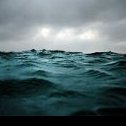
.thumb.jpeg.fc5d633a7b34428fcf19419a73d56d55.jpeg)
